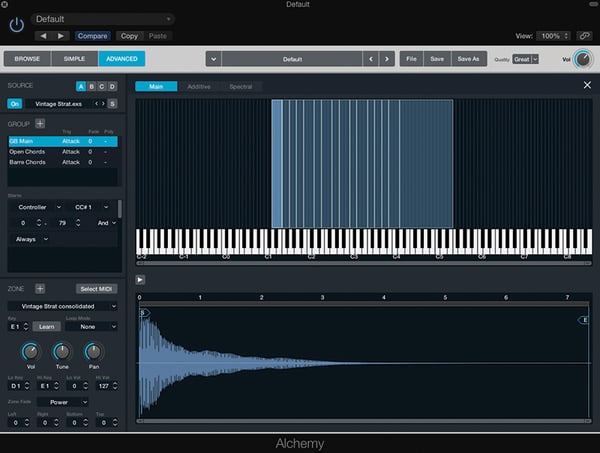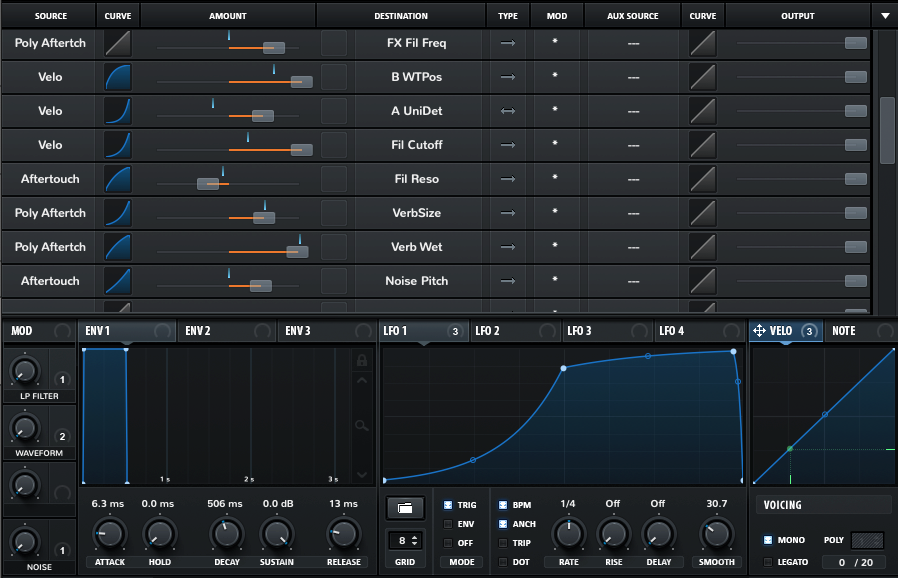One of the biggest misconceptions about music-making technology is that it results in everything sounding the same. Sure, rinsing the same old sample packs won’t do you any favours, but follow these tips from our community and you’ll be on your way to creating sounds that are unique to you.
Ever listened to a song and thought “Hey I’ve used that instrument/sample/loop before?” Well, you’re not the only one. Nowadays the high accessibility of music-making software, synth and sample libraries means you can find pretty much any sound on a decent budget. Unfortunately this also means that it's a lot easier to end up sounding like somebody else. So how do you avoid this trap and create productions that sound unique? We asked dBs students, alumni and staff to share their tips for creating sounds that are entirely your own.
1. Record sounds around you
"A great way to create new sounds is to interpret what’s happening in your life. Last week I went out and recorded some sounds in the town centre. I was wearing a pair of boots that needed re-heeling and were down to the metal. I stamped a tune out on the pavement as I walked.
I also used the sounds of an electric window winding up and down in my car, the sound from the exhaust, the sound of the electric hood winding up and winding back and the sound of the door opening.
Don’t be afraid to ask others for help. I asked a street vendor selling the big issue to do a call-out for the recording. He was happy to oblige. The manager of a nearby bar also helped us out with sounds of a waiter shaking a cocktail shaker and the sound of crushing the ice.
I even approached a kind woman using crutches and recorded the sound of the crutch hitting the pavement as she walked. Crutches have got a little unique sound of their own. She was happy to help too.”
– Elizabeth Seagram-D’Avranches, Access to HE Student

2. Use a granular synth
"My tip for creating unique-sounding material is to try using a granular synth. The one in logic is very decent – it’s called Alchemy. I like to record my own samples and upload them into one of the four oscillators available. This is a pretty good way to approach sound design because it gives you unlimited possibilities to use as a sound source. Another thing I love about Alchemy is that even though it’s a powerful instrument, the user interface is nice and easy-to-navigate."
– Nicholas Ward, FdA Music & Audio Technology student

3. Experiment with Kontakt 6's wavetable feature
"A great way to create unique sounds can be achieved by experimenting with Native Instruments Kontakt 6's new wavetable feature. I have been capturing and finding samples, like field recordings from Yellowstone National Park and loading them into Kontakt as a wavetable to use like you would in a synthesiser.
Just doing this alone can create really unique tones. To take things one step further I have assigned multiple parameters from within Kontakt's controls to an XY Pad, created using the KSP script editor. This way I can manipulate multiple parameters at once. Examples include changing FX Sends, Wavetable Position & Form, Filter Cutoff and anything you fancy controlling.
A combination of using interesting samples as wavetables (in a synthesiser or sampler like Kontakt), combined with controlling multiple parameters using an XY pad will get you some really unique sounds."
– Alan D Miles, FE, HE & MA Course Tutor, dBs Plymouth
4. Take inspiration from nature
For me, a really fun and spontaneous way of producing is by integrating natural sounds or animal sounds. Finding intricate rhythms in bird songs, voices, wind, insects, dogs, water or whatever it may be, can be a really nice way of creating different atmospheres or even dynamic sound leaps. For example, I've been experimenting with a dog bark and it immediately focuses your attention. Something like this could be used in a number of ways in a track. Get out there, record some sounds, experiment with everything.
– Adam Berwick, Innovation in Sound Student
5. Use Velocity as a modulation source
"To create some unique and interesting sounds using a synthesiser or a sampler use velocity, aftertouch or if you're lucky polyphonic aftertouch as modulation sources for multiple destinations. Create a patch or dial up a preset you like then apply this technique to as many parameters as you can – the more you use, the crazier it gets. Once this is set up, your sound will be different each and every time you play it, depending on how hard you hit the keys and how long you hold the notes for. The great about this technique is that it's really expressive if you're a keyboard player but if not it's really easy to do by automating the velocity in the piano roll in your DAW."
– Mike Steventon, dBs Plymouth alumnus and DJ/producer

6. Sample videos
"Music is entertainment, so we should incorporate all sectors of the media into our music to create an unmatchable sound. I like to download YouTube videos and sample the mp3 – my latest one for this was using a TikTok with a funny tone to their voice. I used a compressor, exciter, reverb and tremolo to make it the melody to my beat. You can’t be more bricolage than that!"
– Sonny Robinson Music Production and Sound Engineering student
If you want to explore more methods of sound creation and manipulation, then check out our Electronic Music Production courses, available at diploma, undergraduate
and Master's level.

